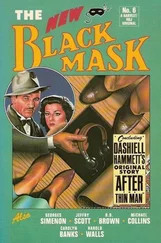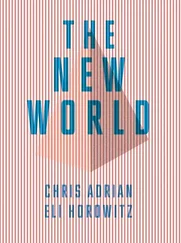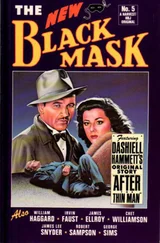But now, ladies and gentlemen, I am known for my dialectical excesses and must therefore do justice to my bad reputation here too [laughter in the auditorium] by pointing out that this static aspect I just showed you cannot, of course, have the last word in such a song. Rather, Schoenberg’s sense of form is so refined that precisely this somewhat overemphasized tonic has implications for the construction, as the music subsequently moves far away from the tonic – not simply in the sense of using fresh degrees or suchlike, for it is necessary to touch on a somewhat distant tonal region in order to compensate for the damage to the overall construction caused by this overbearing dominant. He therefore follows it with a modulation that goes first to B major, then – after touching on D major again – to F sharp major and from there to E flat, and only then back to the initial D major. So you must understand the harmonic development correctly: although the song clings firmly to its D major character, what is required for this character to emerge is the creation of a certain equilibrium through very marked modulations, through deviations. So already here, in this music, there are what one might call harmonic expanses, harmonic complexes, whose totality creates a kind of balance, and tonality here consists not in the starting point or the goal but rather in this balance, which is brought about entirely through these overarching harmonic complexes. You can already see from this how modern, in a deeper, subcutaneous sense, is the treatment of harmony via this principle of balance, however harmless the musical surface might seem. So now, please note – I will play you a little more – how this D major is set up through the equilibrium between the individual harmonically very distant complexes, and how the music also moves rather far away from the static opening, and nothing static returns [plays Gurrelieder ] […] strong emphasis on the tonic [plays]. And now on page 40 we have this famous theme, 16which is then developed over the whole of Gurrelieder somewhat in the manner of a second subject in a symphony, and which I will only touch on now because of the large intervals that are used freely for the first time. It is very interesting that Schoenberg’s large intervals, which have a very complex history, were initially derived purely from the individual melodic idea and only a little later, in the op. 6 songs, justified after the fact, as it were, as an adumbration of complicated harmonic relationships to which they refer in the manner of arabesques, such as the famous minor ninths in ‘Traumleben’ from op. 6. But here they are initially introduced as a purely melodic idea, and Schoenberg, who often said that innovations in one area are usually accompanied by a certain conservatism in other areas, did not make an exception here: he evidently found the compulsion to use these large intervals so foreign and unusual that here, precisely in this most melodically exposed of passages, he chose an especially simple harmonic skeleton for it. Incidentally, I would like to add that Webern told me on various occasions that both he and Schoenberg – and they did, after all, somehow carry out the great innovations together – that they kept fluctuating between doing it and not doing it, that they only did it with fear and trembling, as it were, and were always worried and tried to go back on it, but then took the chance after all because there was no other way; and I would almost say that some of this fear and trembling, of this worry and this fear, entered the music itself, and that, the fact that there was no other way, that is what gives these things their true force. So, the passage I mean is on page 40 [plays]; now he quite simply repeats the phrase [plays], and then it even appears a third time [plays]. Now, in later years he would surely not have written that for a third time. But you can sense something in it of the tension in which these intervals, which grew purely from the melody, appeared there. I also think – and we will return to this – that all of us really grew up with the idea, at least I thought it for a long time, that the explanation for Schoenberg’s development lies substantially in his string quartet writing, and that he was really a string quartet composer first and foremost. I noticed some time ago – and this is seemingly very paradoxical – that, in fact, Schoenberg’s instrumental themes almost all have a particular songlike quality; not songlike in the sense of striking melodies one can sing, but in the sense that they breathe in a way that normally only vocal melodies do. And actually, the more intensively I occupy myself with these things, the stronger my feeling grows that one of the emancipatory impulses one finds in Schoenberg is – how shall I put it? – that of a singing out freely. The singing voice was always subject to a form of constraint through its adaptation to the tonal system in general. And, within the framework of these tonal limits and these circumscribed metric limits, one always experiences singing as if – one can reconstruct this experience, at any rate – as if it were bound, as if it actually wanted to become much freer. And, if I am not mistaken – I am really saying this with a degree of caution, but I feel it very strongly – one of the deepest impulses in Schoenberg, and thus in the emancipation of music as such, is that of unleashing the singing voice, to allow the voice to sing out. And this impulse to sing out, perhaps this was subsequently transferred from there to instrumental music. There seems to be a certain confirmation of this in the fact that the real origins of Schoenberg’s polyphony, which is after all the most decisive element in Schoenberg, lie in vocal rather than instrumental music; that is, Schoenberg’s first great canonic structures, which determined the later integral counterpoint in a certain sense, that they are locating precisely in Gurrelieder , and that Gurrelieder even goes much further in its canonic and imitative elements than the subsequent purely instrumental works, and that he then returned to these canonic arts, which are taken incredibly far here, to almost Franco-Flemish levels, that he only returned to these in the transition to twelve-note composition during the time of Pierrot lunaire . And I feel that such an impulse to sing out was a very substantial factor in this passage.
So, I would now like to draw your attention to another phenomenon in Schoenberg. I think we have spoken a number of times about Valéry’s statement that the quality of a work of art can be measured by its refus – that is, by the things it eschews. 17One can very easily gain the impression that this power of this refus , this refus is greater in Western European than Central European music – as if Schoenberg’s school had always wanted to have everything and consequently, through this lack of renunciation, this lack of things one denies oneself, took on a somewhat academic character, shall we say. I think that this assumption is not entirely correct, and that, if one were to put together all the possibilities for other music that are contained in Schoenberg and which he simply cast by the wayside, that this would produce a catalogue of impressive proportions. For now I will show you – and this is connected once again to the topic of art nouveau – I will show you only how the possibilities that were elevated to exclusivity by Schreker, that these possibilities and many others are immanent in Schoenberg too, and that he simply chose not to pursue them. In other words, the formal language of impressionism is very much present in Schoenberg too. And I think I can say that with reference to the lecture by Mr Boulez, who asserted a certain opposition between the Schoenberg school and impressionism 18– whereas Gurrelieder in particular is extremely rich in such very loose elements. I will play you just this one highly characteristic Schrekerlike passage, this is on page 50 [plays], and so forth. That is from King Waldemar’s ‘Midnight Song’.
Читать дальше












